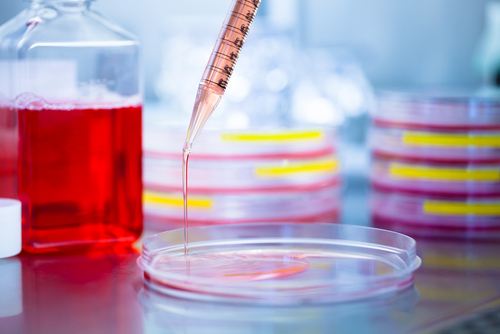Researchers Find Evidence of How GBA1 and GBA2 Genes Contribute to Gaucher Disease
Written by |

Researchers have identified useful insights into the molecular workings underlying Gaucher disease that may reveal promising new targets for new therapeutic strategies.
The study, “Identification Of A Feedback Loop Involving Beta-Glucosidase 2 And Its Product Sphingosine Sheds Light On The Molecular Mechanisms In Gaucher Disease,” was published in the Journal of Biological Chemistry.
Gaucher disease is caused by mutations in the GBA1 gene, which leads to faulty activity of the enzyme β-glucosidase. This, in turn, promotes the accumulation of a lipid called glucosylceramide, necessary for the proper activity and survival of cells. When too much glucosylceramide accumulates within cells, a hallmark of Gaucher disease, it impairs cellular activity and triggers cell damage.
The gene is similar to GBA1, but its role in the pathology of Gaucher disease and its relationship to GBA1 remains elusive.
Now researchers found that GBA2 activity is decreased in patients with Gaucher disease, an effect that seems to be dependent on GBA1.
Using several different lab experiments, researchers observed that a toxic molecule that accumulates in Gaucher cells through the action of GBA2, called sphingosine, actually binds to GBA2 and inhibits it, a mechanism of molecular regulation in cells known as “negative feedback loop.” In this case, sphingosine accumulation inhibits GBA2 activity, thereby avoiding further accumulation and cell damage.
“Here, we provide new insights into the regulation of GBA2 activity, in particular in Gaucher disease,” researchers wrote. “We demonstrate that GBA2 activity depends on GBA1 activity, but not vice versa. This mechanism applies generally — whenever GBA1 was pharmacologically blocked or genetically deleted, and in every in vitro and in vivo system that we tested, GBA2 activity was reduced.”
“We reveal a sphingosine-dependent regulation of GBA2 activity, which occurs in the absence of GBA1 activity and might also occur in Gaucher disease,” they added. “Our results add a new chapter to the understanding of the molecular mechanism underlying Gaucher disease pathology, presenting new ideas for the therapy of this severe … disorder.”



